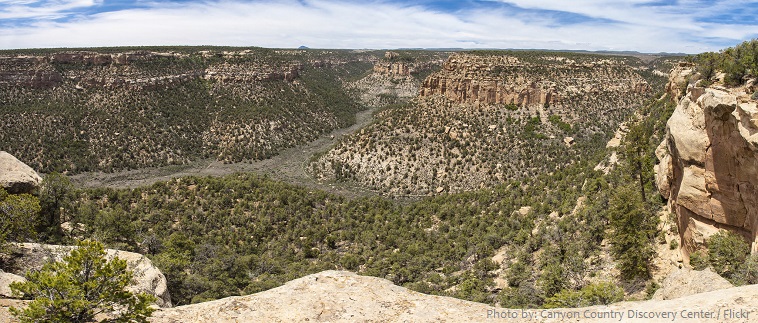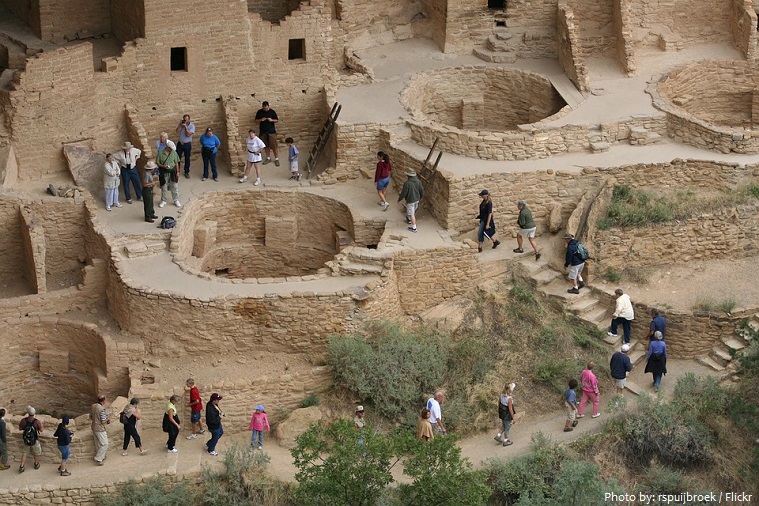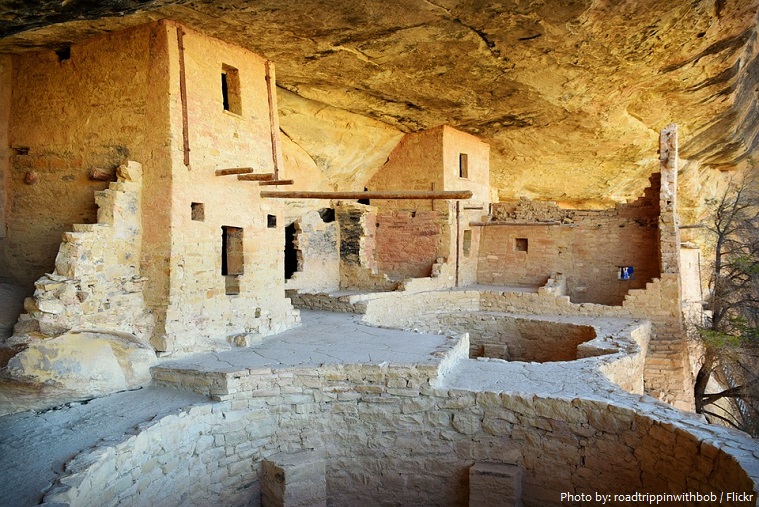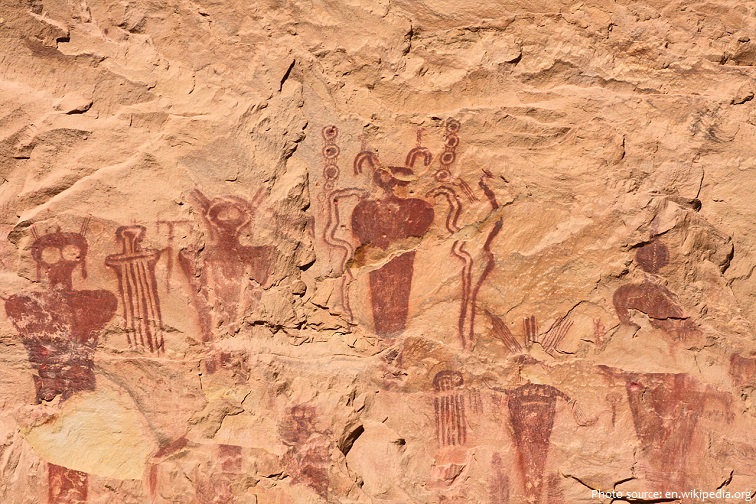Mesa Verde National Park is a United States national park located in southwestern Colorado.
It was established in 1906 to preserve notable prehistoric cliff dwellings.
Mesa Verde National Park was designated a UNESCO World Heritage Site in 1978
The park covers an area of 212 square kilometers (82 square miles) or 52,485 acres (21,240 hectares).
Elevations in the park range from about 1,900 to 2,600 meters (6,100 to 8,400 feet). The terrain is dominated by ridges and valleys running roughly north and south. The northernmost point is 21.2 kilometers (13.2 miles) farther north than the southernmost.
The terrain in much of the park is dominated by ridges and valleys running roughly north and south; many of these ridges peak at an east–west crest near the park’s northern border, which turns more northerly–southerly towards the park entrance. Deep canyons cut into the plateau leave narrow strips of mesa between the canyons, with niches and alcoves of various sizes in the sandstone of these canyon walls.
With more than 5,000 sites, including 600 cliff dwellings, it is the largest archaeological preserve in the United States.
A majority of the sites are associated with Ancestral Pueblo cultures and date to different time periods, ranging from 580 to 1290. Although the park offers some of the best-preserved examples of late Basketmaker to pre-1300 Pueblo sites, in many ways both the sites and the setting of Mesa Verde are atypical when compared with other contemporary sites in the surrounding central Mesa Verde region.
The population of Mesa Verde probably peaked at about 5,000 persons.
Mesa Verde, Spanish for “green table,” earned its name because of its relatively lush cover of piñon and juniper forest.
The park protects some of the best-preserved Ancestral Puebloan archaeological sites in the United States.
Cliff Palace is the best-known cliff dwelling in Mesa Verde National Park. It is located in the largest alcove in the center of the Great Mesa. It was south- and southwest-facing, providing greater warmth from the sun in the winter. Dating back more than 700 years, the dwelling is constructed of sandstone, wooden beams, and mortar. Many of the rooms were brightly painted. Cliff Palace was home to approximately 125 people, but was likely an important part of a larger community of sixty nearby pueblos, which housed a combined six hundred or more people. With 23 kivas and 150 rooms it is thought to be the largest cliff dwelling in North America.
Balcony House is set on a high ledge facing east. Its 45 rooms and 2 kivas would have been cold during the winter. Visitors on ranger-guided tours enter by climbing a 9.7-meter (32-foot) ladder and a crawling through a 3.6-meter (12-foot) tunnel. The exit, a series of toe-holds in a cleft of the cliff, was believed to be the only entry and exit route for the cliff dwellers, which made the small village easy to defend and secure. One log was dated at 1278, so it was likely built not long before the Mesa Verde people migrated out of the area. It was officially excavated in 1910 by Jesse Nusbaum, one of the first Superintendents of Mesa Verde National Park.
Starting c.7500 BC, Mesa Verde was seasonally inhabited by a group of nomadic Paleo-Indians known as the Foothills Mountain Complex.
By 1000 BC, the Basketmaker culture emerged from the local Archaic population, and by 750 AD the Ancestral Puebloans had developed from the Basketmaker culture.
The Mesa Verdeans survived using a combination of hunting, gathering, and subsistence farming of crops such as corn, beans, and squash.
By 1300, following the Great Drought (1276–99), most of the people had left Mesa Verde, moving south, according to archaeological evidence, into what is now New Mexico and Arizona. These people are among the ancestors of the present-day Pueblo Indians.
Although explorers from Spain went through the general region in the 18th century, actual sight of the cliffs dwellings by outsiders seems to have first occurred in the latter half of the 19th century.
Elk are the most common large animals, and there are a few bears and mountain lions and many smaller mammals in the park. Snakes and lizards also abound, as do birds.





